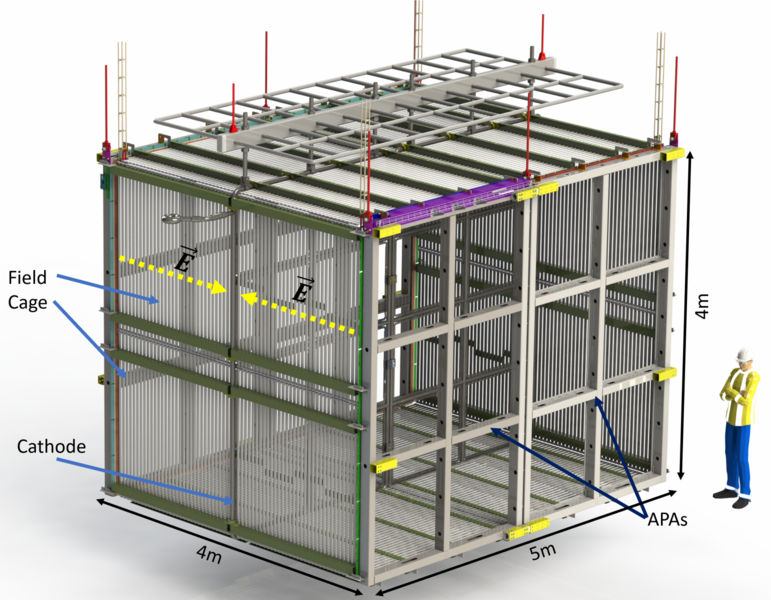SBND
SBND
Introduction
SBND (Short-Baseline Near Detector) will be a 112 ton liquid argon TPC neutrino detector located 110 m from the target of the Fermilab Booster Neutrino Beam (BNB). SBND, together with the MicroBooNE and ICARUS-T600 detectors at 470 m and 600 m, respectively, make up the Internationa Short-Baseline Neutrino (SBN) Program at Fermilab.
The program emerged from a joint proposal, submitted by three scientific collaborations, to use particle detectors to perform sensitive searches for appearance and disappearance in the Booster Neutrino Beam. SBN aims to investigate a rich variety of topics in neutrino physics. Indeed, the science capabilities of SBN extend well beyond the oscillation searches. The three liquid argon time projection chambers (LArTPCs) located on-axis in the Booster Neutrino Beam will be record millions of neutrino interactions in argon in high precision detectors, enabling a broad research program such as the experimental short-baseline neutrino anomaly, studying the neutrino oscillation phenomenon in both νe appearance and νμ disappearance channel and the neutrino-argon scattering that has direct relevance for future liquid argon detectors in neutrino experiments, especially the Deep Underground Neutrino Experiment (DUNE).. In addition, as the world-wide effort to discover new physics beyond the Standard Model continues, the SBN program has received attention from experimenters and theorists alike for the opportunity it presents to contribute to this quest.
SBN will search for new physics in the neutrino sector by testing the sterile neutrino hypothesis in the 1 eV2 mass squared region with unrivaled sensitivity. SBND will measure the unoscillated beam flavor composition to enable precision searches for neutrino oscillations via both electron neutrino appearance and muon neutrino disappearance in the far detectors. With a data sample of millions of neutrino interactions (both electron and muon neutrinos), SBND will also perform detailed studies of the physics of neutrino-argon interactions, even in rare channels.
